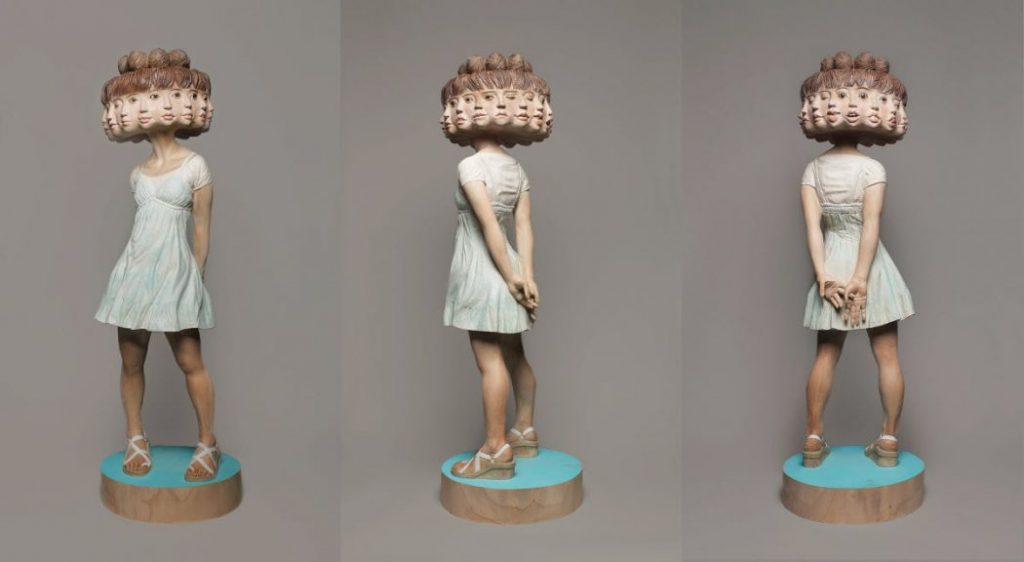Japanese sculptor Yoshitoshi Kanemaki transforms camphor wood into life-size figures that oscillate between sanity and madness.
Exploring the tension between life and death through the quiet intensity of contemporary Japanese art.
Yoshitoshi Kanemaki works primarily with camphor wood to carve hyperreal human figures that merge psychological depth with surreal distortion. His sculptures evoke introspection and disquiet, revealing how beauty and imperfection coexist within the same form—a reflection deeply rooted in Japanese aesthetics.
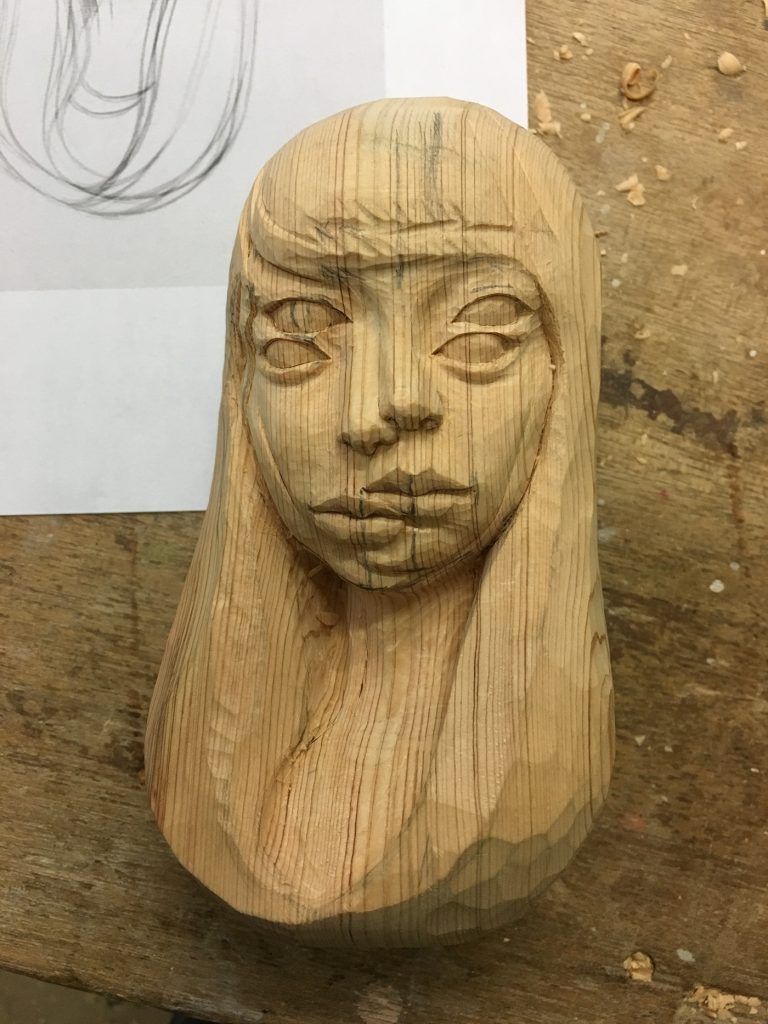
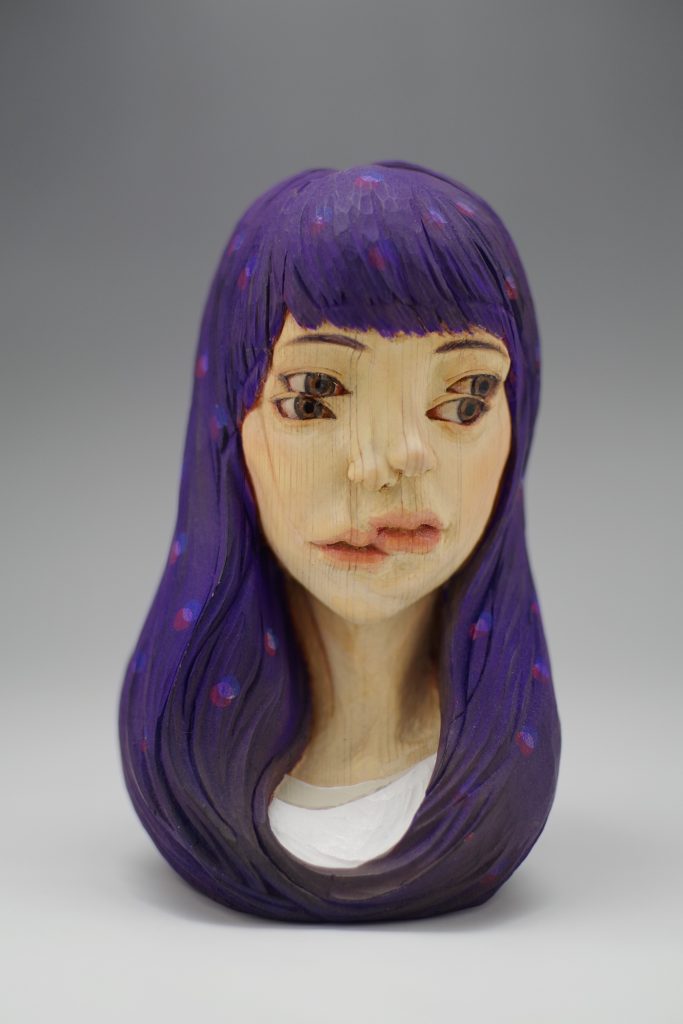
Camphor wood: matter, scent and memory
The artist’s main medium, camphor wood, is known for its durability, reddish-brown grain, and sharp, spicy aroma. Native to China, Japan and Taiwan, it has traditionally been used in chests and ritual objects. In Kanemaki’s hands, this organic material becomes a vessel for multiplicity: faces that split, torsos in metamorphosis, and bodies inhabiting several emotional states at once.
Process and craft: from trunk to figure
Kanemaki documents each stage of his creative process, cutting into solid trunks with saws and chisels until form emerges. The initial grid lines traced on the surface allow viewers to sense the figure’s birth from raw matter: a strange adolescent, a nude young man, or a woman with several expressions. Through his social media, he shares this almost mythical transition—from “rough wood” to ambiguous human presence.
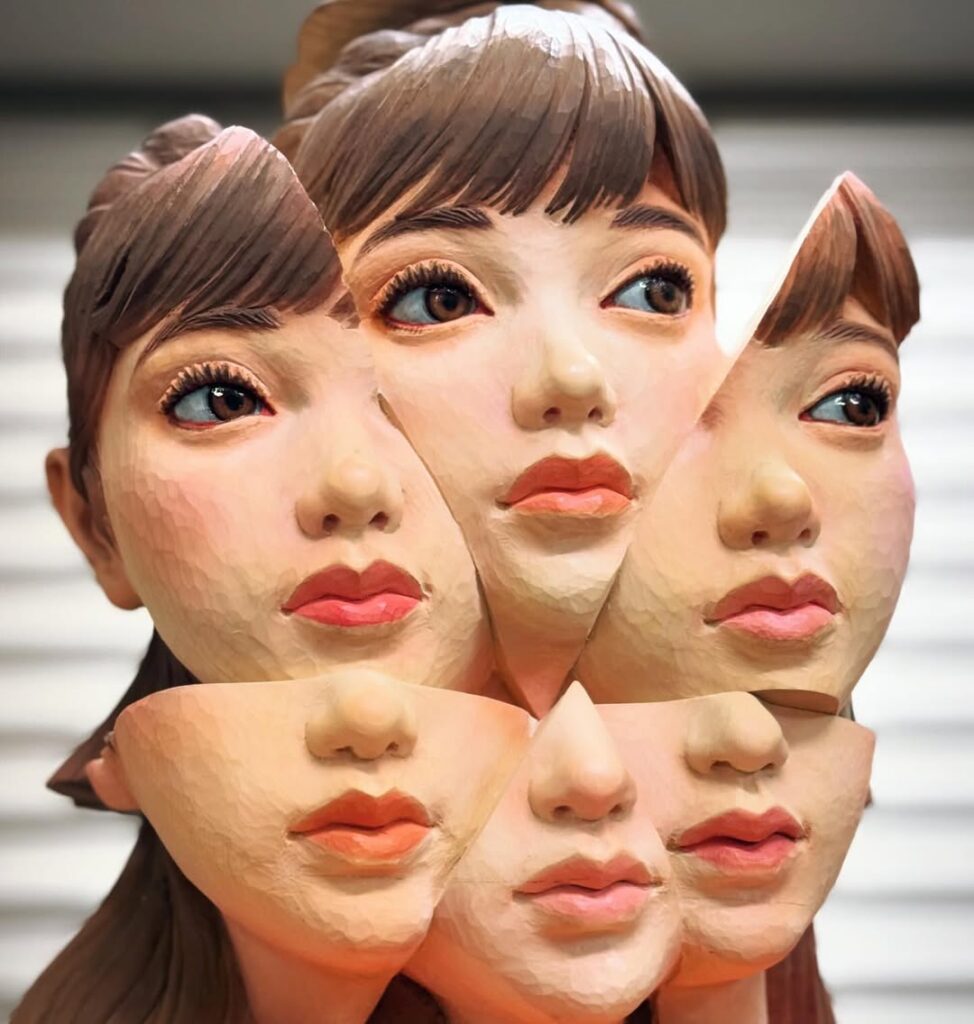
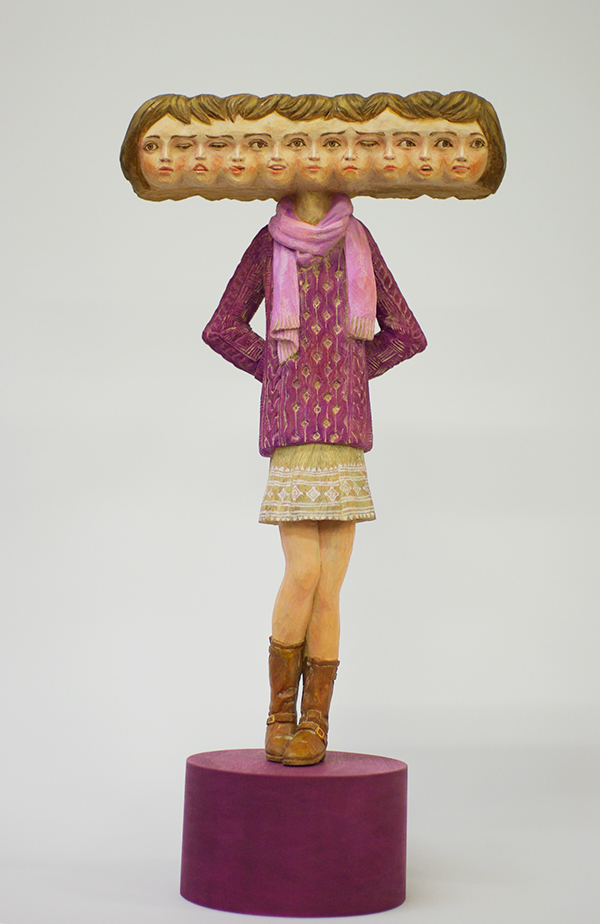
Life, death and the philosophy of imperfection
Death remains a constant axis in his work, not as opposition to life but as its natural extension. The veins, knots and irregularities of the wood are never hidden; instead, they become part of the narrative, a reminder that the final form retains the memory of its vegetal origin. Kanemaki’s sculptures embody the Japanese concept of wabi-sabi—the beauty found in transience and imperfection.
Kanemaki’s exploration of identity and duality in sculpture has been interpreted as part of a broader reflection on human consciousness and transformation. This perspective deepens when considering how his figures embody both serenity and disquiet, as seen in his surreal wooden compositions that merge craftsmanship with metaphysical narrative.
Exhibitions and recognition
The artist shares new pieces and process imagery on his social media channels — follow him on Facebook. His work has been featured in several exhibitions in Japan, including the Park Hotel Tokyo, contributing to the growing international appreciation of his poetic and unsettling sculptural universe.
For more news, analyses and features on contemporary sculpture and global art scenes, explore our News section.


